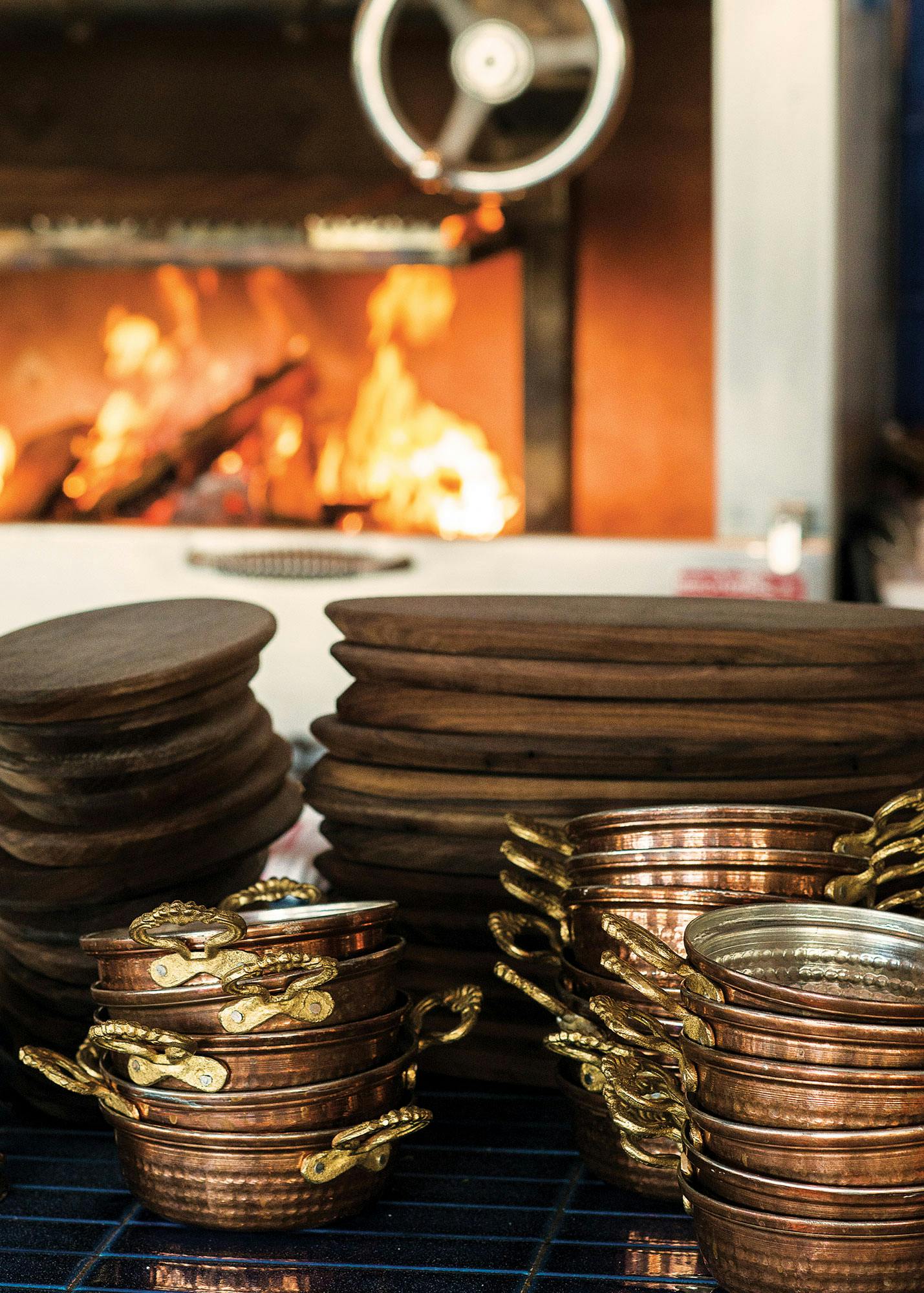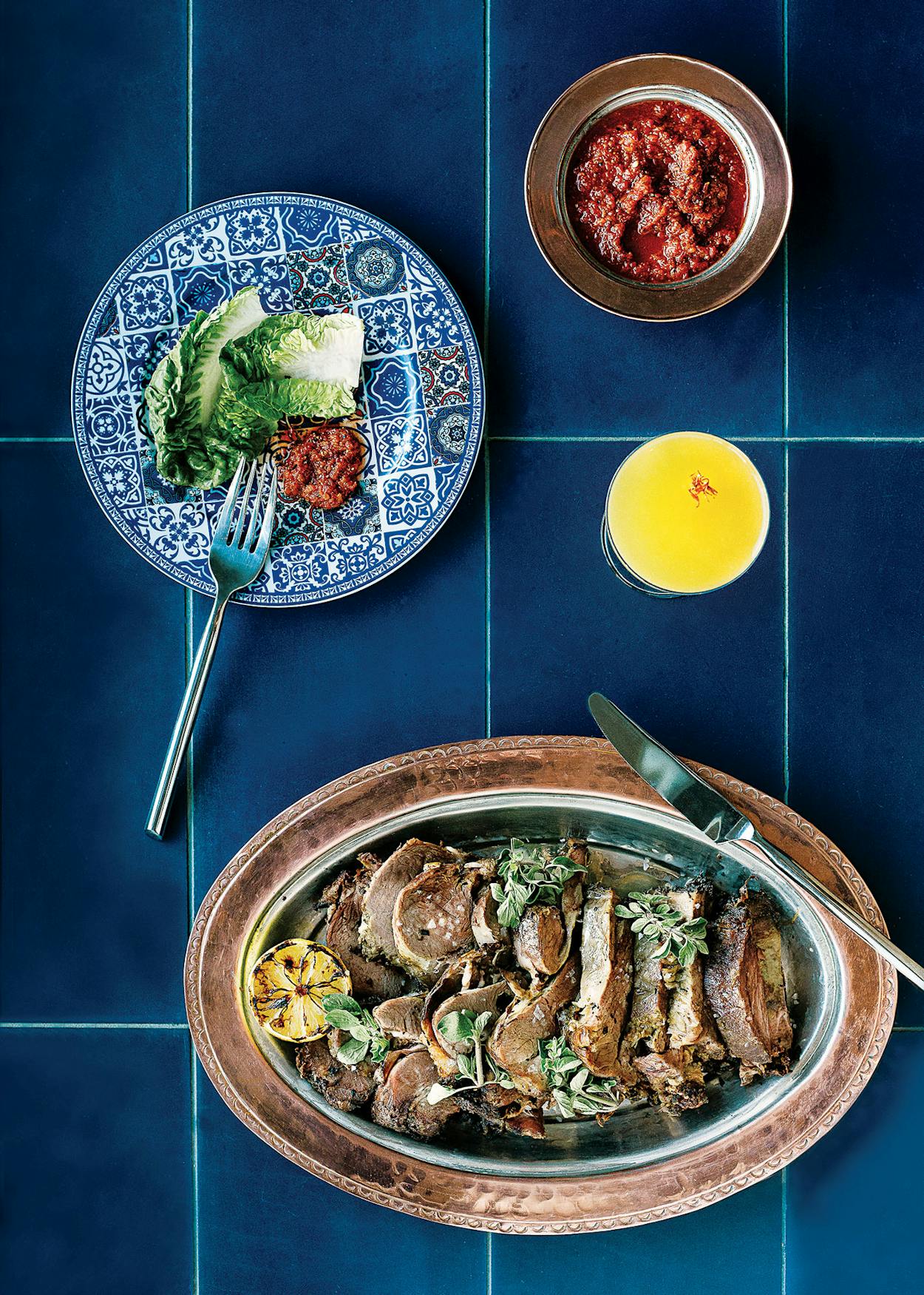It’s nearly ten o’clock on a Sunday night, and my friends and I are sitting, glassy-eyed, as we survey an untidy still life of small plates and empty glasses at Zaytinya, the new restaurant from chef-restaurateur José Andrés, at Frisco’s Star complex (where the Dallas Cowboys are headquartered). We’re debating whether to finish the evening with sweet, strong Turkish coffee. It’s so tempting and would be the perfect ending to the Middle Eastern and Greek dinner we have just demolished.
But do we dare? More to the point, do we have room? We have nibbled a salad spangled with ruby red pomegranate seeds, dived into great scoops of creamy labneh, practically knocked over the wine getting the last luxurious spoonfuls of Sultan’s Delight, and cried, “No more!” right before inhaling another bite of apples under a crispy cap of almond-studded phyllo. Should we order the coffee? Maybe not this late at night, but a little nip of Samos Vin Doux, a Greek dessert wine, sounds like a fabulous idea.
Zaytinya is the first Texas venture for Andrés, one of the giants of the restaurant industry in the United States. He came to this country from Spain, in 1991, at the age of 21, and by the time he became a U.S. citizen, in 2013, he had built an empire. The home base of that empire, which now encompasses thirty restaurants in twelve cities and two countries, is Washington, D.C. It’s hard to overestimate his professional stature—Andrés has won numerous James Beard Awards (including 2018 Humanitarian of the Year), and his flagship, Minibar, has two Michelin stars. Like many outsize personalities, he can’t seem to sit still or stay out of the news. He set up extensive disaster relief operations in Haiti in 2010 and Puerto Rico in 2017. He’s also a vocal proponent of immigration reform, tangling publicly with Donald Trump over disparaging remarks the then presidential candidate made about Mexican immigrants.
Andrés’s culinary inspiration is, of course, deeply rooted in Spain and the Mediterranean. As he told a Dallas reporter, “I grew up in Barcelona. I like . . . the meze-style dining you see in tavernas if you visit Turkey or Greece.” The first, and until now only, Zaytinya was born out of that enthusiasm. In its fifteen years in D.C., the restaurant’s accessible and well-priced menu of Greek, Turkish, and Lebanese specialties has made it one of the more popular venues in the city. But, oddly, it had not been exported. So why here? Perhaps Andrés thought North Texas would serve as a good test case to see whether the restaurant could thrive in the American heartland (or at least the more affluent and tech-heavy reaches of the heartland).


When you walk into Zaytinya, you’re struck not only by how big it is but by how welcoming the light, airy space feels despite the fact that it seats 180 people. The designers have gone contemporary, suggesting the Middle East with sensuous shapes and colors rather than ancient artifacts and textiles. Blue-glass light fixtures fill a vast overhead space in the bar, and graceful white arches make open spaces look cozier.
Because Zaytinya’s menu is composed almost entirely of small plates—except for a section of heroic “family-style” specialties designed just for Texas by head chef Jon Thompson and D.C.-based concept chef Michael Costa—it makes sense to order three or so dishes at a time. Before you even start, a basket of paper-thin, magically inflated hot pita bread arrives at your table, accompanied by a saucer of olive oil decorated with a Z-shaped drizzle of startlingly unsweet pomegranate molasses.

Hurricane Hero
Andrés dished out arroz con pollo and carne guisada to hungry Puerto Ricans after Hurricane Maria. Now he is co-writing a book about the experience, We Fed an Island, to be published in September.
The bread is mostly air, so you can follow it up guiltlessly with a round of crunchy triangular lavash chips and velvety, scoopable tzatziki. Or you might have the hummus, heady with garlic and toasted sesame paste. Best of all, order the htipiti, a lovely vermilion-hued heap of chopped roasted sweet peppers with salty nubbins of feta swirled in. Every appetizer we tried was so fresh and meticulously prepared that it made us rethink all our expectations of what’s possible with Middle Eastern meze.
Once you’ve gotten into the swing of things, I’d suggest doing a salad, like the frisée and wood-roasted beets; it comes with the thick Greek smoked-walnut garlic sauce called skordalia. Or you could try one of the cheeky, cheesy flatbreads. After that, get serious and segue to seafood. Our favorite was the fantastic octopus Santorini, superbly tender with just a whiff of smoke from the grill. It came atop a marvelous puree of sweet yellow split peas garnished with capers and pink pickled onions. But honestly, I would be hard-pressed to choose between the octopus and the sautéed shrimp zapped with mustard, lemon juice, dill, and olive oil—it was tart to the nth power, and we loved it.
You’ll want a vegetable to round out the animal protein. We went with our server’s suggestion of crispy eggplant. Bad decision. The background bitterness of the plump purple vegetable got in the way (yes, yes, I know it’s really a fruit), and the crust was clunky. Our favorite side? Toasty cauliflower florets, tossed with capers, pine nuts, and sultanas on a sumptuous bed of tahini.

The Middle East generally does not do giant grilled steaks, so although we could have gotten a 24-ounce wagyu ribeye that had been put on the Frisco menu just for the Texas audience, we hewed to tradition.
We struck out with our first choice, a boring if well-made chicken orzo stew that had all the oomph of cream of tomato soup. But our second selection, hünkãr beğendi—the aforementioned Sultan’s Delight—was a miracle of heady wine-braised lamb shank cuddled up to an eggplant–Greek cheese puree as lush as silk velvet.
Desserts trend homey, as opposed to show-offy. We tried the galatopita, which tasted like apple pie if you managed to include every element in one bite. But the best was one that had just been dreamed up by Costa, a straightforward bowl of yogurt ice cream with red grapefruit segments, dates, raspberries, pomegranate seeds, mint, and honey, capped with a lovely, piercingly bittersweet grapefruit granita.
As we left, giddy from our parting shot of Samos Vin Doux, we wondered about Zaytinya’s future. A lot depends on whether it can attract enough repeat visitors from Frisco and siblings like Plano, because Dallas is 25 miles away. And also on whether folks who come to gawk at the Cowboys’ facilities are going to eat Middle Eastern food or chow down on pizza, burgers, and steaks at the many, many other restaurants a few steps away. All I know is that if Zaytinya were in Austin, I’d eat there all the time.
Zaytinya
6655 Winning Dr, Frisco
972-324-3060
L Mon-Fri. D 7 days. B Sat & Sun.
$$
Opened February 5, 2018
- More About:
- Pat’s Pick
- Frisco









